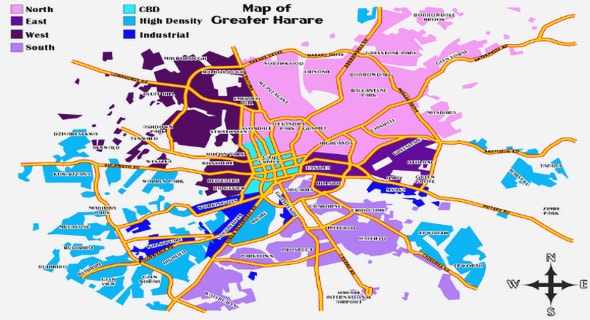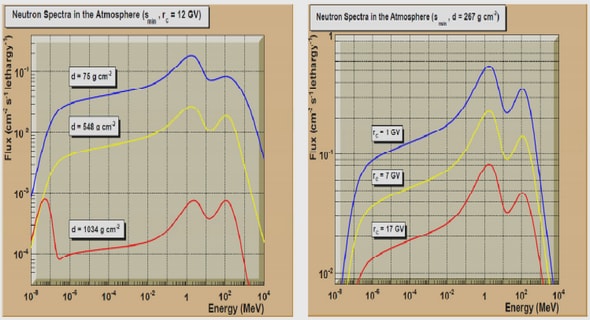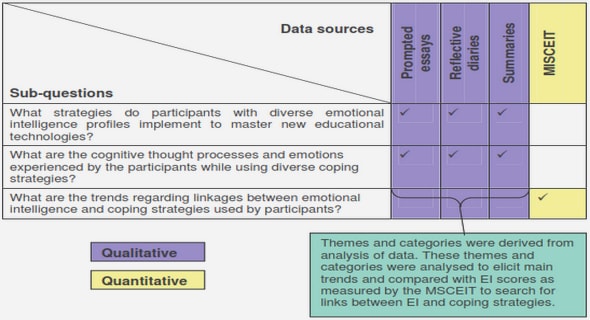Get Complete Project Material File(s) Now! »
CHAPTER 3 MANAGEMENT SUPPORT AND QUALITY ASSURANCE SYSTEMS FOR ECOTOUR GUIDES’ INTERPRETIVE EFFECTIVENESS
INTRODUCTION
The implementation of effective interpretation in nature-based tourism is not without its problems and it is for this reason that appropriate monitoring and evaluation measures should be taken by the management of protected areas in order to ensure quality (Wearing & Neil, 1999:69). This chapter aims to give a broad overview of some of the quality assurance mechanisms that are used to minimise the challenges in tour guiding, and specifically in interpretive guiding in the context of national parks in South Africa, and to discuss management support to ensure quality in interpretive guiding.
Quality assurance mechanisms such as professional associations, codes of conduct, certification, licensing and training are explained. This chapter gives more details of training, particularly, of continuing education and training as one of the quality assurance mechanisms. A discussion of continuing education and training in ecotour guiding is preceded by a brief history of continuing education and training, in order to highlight the underlying basic reasons for the emergence of continuing education and training throughout the world. Then follows a brief explanation of the quality assurance mechanisms that are employed in tour guiding, with special attention to those used in tour guiding in South Africa, the aim being to give guidance on what can be done to ensure quality in interpretive guiding in national parks. This chapter ends by explaining the role of evaluation in ecotour guiding, with the intention of revealing what can be done to assess quality in interpretive guiding in national parks.
To begin with, a brief explanation will be given of constraints that are encountered in interpretive guiding in nature-based tourism.
DIFFICULTIES ASSOCIATED WITH THE PROVISION OF EFFECTIVE INTERPRETATION IN NATURE-BASED TOURISM
Constraints in the delivery of quality interpretation by tour guides in nature-based tourism have been highlighted in the literature. It is necessary here to begin by stating that the difficulties explained in this section are not the only difficulties that tour guides face in being effective in interpretation. However, it is the common difficulties that are overviewed in this section, with suggestions on how they may be overcome. Highlighting these constraints reveals the need for more managerial support for guides, where interpretive guided activities are provided (Chowdhary & Prakash, 2008:293).
One of the constraints is the lack of planning of interpretation. Planning is one of the key considerations of interpretation. This helps a tour guide to be well organised and confident in his/her approach and content. McArthur & Hall (1996:92) are of the view that while the art of delivering interpretation has been around long enough for some very clever techniques to have developed, there has been considerable resistance to more formal planning of interpretation by tour guides. Furthermore, time and resource constraints have forced more interpretive planning to be somewhat ad hoc. The findings of the study that was conducted by Manohar, et al. (2005:12) at Malaysian Recreation Forests, indicate that one of the problems that staff complained about is being burdened by routine maintenance chores that occupied most of their time, and thus reduced their time for interpretive contacts with the visitors. They seemed to have a good understanding of what was needed for good interpretation, but surprisingly, that their superiors might not share their views on the benefits of interpretation.
It is crucial to understand the professional environmental interpretation and education capabilities that are needed for each different level of park interpreters (Chou, Tsai & Wang (2002). Therefore the relevant park manager or protected area manager should remain centrally involved in guide training (Wallace, 1993:75). However, in certain instances, a lack of training or inadequate training in guiding, and particularly in continuing education and training has been identified as a constraint in the provision of quality interpretation. The literature indicates that there is little incentive for practising guides to actively upgrade their interpretive skills or qualifications or to try to improve the quality of their tours (Weiler & Ham, 2001:559). Despite the evidence that interpretation is key to delivering a quality guided ecotourism experience, neither tour operators nor tour guides are likely to initiate dramatic changes in the amount of time or financial resources they allocate to improving the interpretive competence of their guides. In some instances, tour guides argue that theory or academic work has little value for them (Pond, 1993), a perception which may discourage them from up-grading their interpretive qualifications.
In some cases, there is inappropriate and insufficient infrastructure for training and continuous learning for tourist guides. This is evident from the research conducted by Chowdhary and Prakash (2008:293) to examine challenges facing tourist guides in India. Specifically, tourist guides mentioned the following:
- There are insufficient numbers and varieties of training courses / seminars / conferences for the guides who want to learn more as tourist guides;
- The duration of the training programmes are too long;
- Content is often not relevant and does not add value from the point of view of tourists guides;
- There are few options in terms of location and timing of the courses;
- There is no provision for internship/on-the-job training for trainees without previous work experience;
- There is no identified system/content provider that offers authentic information on destinations and monuments;
- There are inadequate facilities for learning foreign languages; and
- There is a paucity of resource centres (such as libraries) offering information on travel, tourism, hospitality and related industries.
Some of the difficulties and factors that contribute to ineffective interpretation and the solutions are explained by Kuo (2002:99) in table 3.1 below.
- The importance of knowing and applying interpretive delivery technique in a proper manner, bearing in mind that tourists are “noncaptive”.
- The importance of appropriate communication for tourists’ safety;
- The importance of knowledge about the park (conservation/cultural aspects); and
- The importance of employing well-trained tour guides.
In order to achieve what is stressed in Table 3.1, it is apparent that the role of management in enhancing effective interpretation is crucial, as explained in the following section (3.3).
THE ROLE OF MANAGEMENT IN ENHANCING EFFECTIVE INTERPRETATION
Management in any organisation is key to the fulfilment of its objectives. Management in this section refers to park management, i.e. park managers and tourism managers.
National park managers/managements have traditionally provided information and interpretive services for park visitors, ranging from basic signage and brochures to sophisticated displays and guided activities (Hockings, 1994:17).
According to Buckley (2004:7), until recently commercial tour operators were not significant stakeholders in protected area management, and in most of the world this is still the case. This is contrary to the claim that nature-based tour operators are important mouthpieces for protected area agencies through the messages they deliver to their clients (Armstrong & Weiler, 2002:104)
If promotion of a conservation ethic through interpretation is an appropriate and necessary role for commercial ecotour operators and their guides, it is imperative that such operators should be required to provide quality interpretation (Markwell & Weiler, 1998:106). Operators and protected area managers must ensure furthermore that the tour itinerary and operating conditions are conducive to excellent interpretation (Weiler Ham, 2001:558). This calls for cooperation and understanding between these two groups (park managers and tour operators) for the benefit of tourists and the sustainability of the tourist destinations concerned. Tour operators licensed to operate in protected areas are a potential vehicle for delivering messages to visitors about minimal-impact behaviour, heritage values, conservation and protected area management (Armstrong & Weiler, 2002:194).
Sharing a similar sentiment, Choegyal, in Wearing and Neil (1999:55), asserts that ecotour operators in wilderness and other protected areas must assume responsibility for minimising the impact of their operations on the destination region. Furthermore, according to Budeanu (2005), tour operators can use their influence to trigger positive changes in attitudes and practices regarding sustainable tourism.
According to Ham and Weiler (2002:35), for the most part tourism operators see interpretation as a means of adding value to wildlife tourism, while managers of protected areas appreciate its value in both managing on-site visitor behaviour and contributing to long-term wildlife conservation.
However, Weiler et al., in Weiler and Ham (2001:551), state that many operators have little idea what interpretation is. Weiler and Ham (2001:551) assert that many operators have no idea whether their clients’ understanding and appreciation of nature and culture are enhanced as a result of their guided tour experience. Since most tour operators in Australia and elsewhere have only a rudimentary understanding of interpretation, it is unlikely that they will recruit guides for their expertise as interpreters, or increase their pay if they upgrade their interpretive skills or qualifications (Weiler & Ham, 2001:559). In Taiwan, according to Chou, Tsai and Wang (2002:599), many negative effects that occur due to the operators’ and consumers’ ignorance of the fragility of nature and/or misconception of the real essence of ecotourism.
Declaration
Acknowledgements
Dedication
Abstract
CHAPTER 1: ORIENTATION AND GENERAL BACKGROUND PAGE
1.1 Introduction
1.2 The context
1.3 Statement of the problem
1.4 Overall aim and research objectives
1.5 Hypotheses
1.6 Research methodology
1.6.1 Literature study
1.6.2 Empirical Investigation
1.6.3 Data analysis
1.7 The significance of the study
1.7.1 Significance in the academic world
1.7.2 Significance in the industry
1.8 Definition and clarification of concepts
1.9 Delimitation of the study
1.10 Thesis structure
1.11 Summary
CHAPTER 2: THE PLACE AND NATURE OF INTERPRETATION IN NATURE-BASED AND CULTURAL TOURISM
2.1 Introduction
2.2 Conceptualization of the term Interpretation
2.3 An Historical perspective on interpretation in national parks
2.4 Interpretation in nature-based tourism
2.4.1 Tourism in national parks
2.4.2 Tourism in South African national parks
2.4.3 The management of visitors and their environmental impact
2.4.4 Enhancing tourists’ experience/satisfaction in Nature-based tourism through Interpretation
2.5 Interpretive roles of tour guides in national parks
2.6 Communication competency of tour guides
2.7 The conceptual foundation – EROT model of interpretive communication
2.8 Conclusion
CHAPTER 3: MANAGEMENT SUPPORT AND QUALITY ASSURANCE SYSTEMS FOR ECOTOUR GUIDES’ INTERPRETIVE, EFFECTIVENESS
3.1 Introduction
3.2 Difficulties associated with the provision of effective interpretation in nature-based tourism
3.3 The role of management in enhancing effective interpretation
3.4 Enhancing tour guides’ Interpretive effectiveness through quality assurance mechanisms
3.5 Evaluation of interpretation
3.6 Conclusion
CHAPTER 4: METHODOLOGY
4.1 Introduction
4.2 Research design
4.3 Qualitative approach
4.4 Quantitative research
4.5 Survey research
4.6 Data processing and analysis
4.7 Reliability and validity of the survey instruments
4.8 Summary
CHAPTER 5: RESULTS
5.1 Introduction
5.2 Qualitative analysis and interpretation
5.3 Presentation of quantitative analysis
5.4 Conclusion
CHAPTER 6: CONCLUSIONS AND RECOMMENDATIONS
6.1 Introduction
6.2 Discussion and conclusions drawn from the results
6.3 Recommendations
6.4 Limitations of the study
6.5 Contributions of the thesis
6.6 Direction for future research
6.7 Conclusion
List of references
GET THE COMPLETE PROJECT


